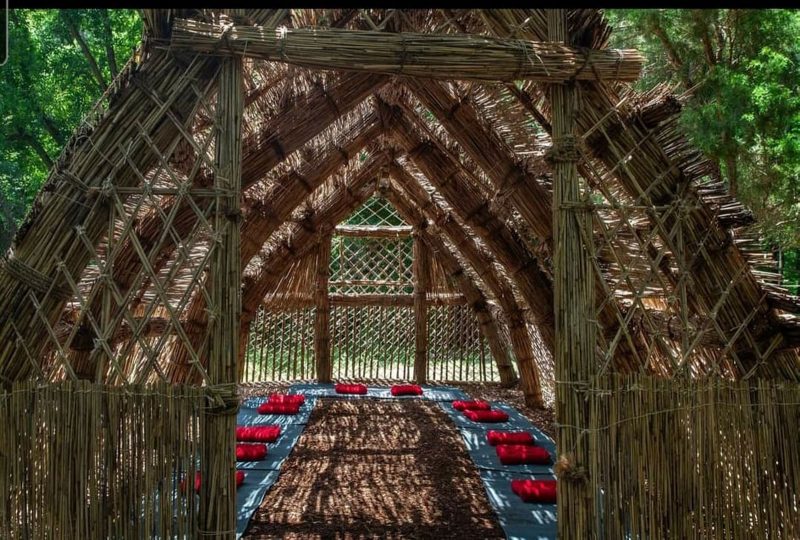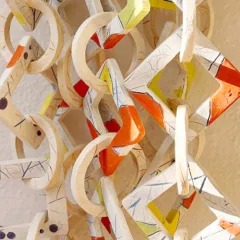
In case you missed it, Artblog recently announced Added Velocity‘s five 2021-2022 awardees. These artists were each awarded $15,000 in directly funding to further their projects already funded under the Velocity Fund. Artblog is excited to present short spotlight interviews with each of this year’s awardees!
On Tuesday we published the first interview with Ana Cecilia Gonzalez, lead artist for the project Alumbra. Today we’re back with Yaroub Al Obaidi, lead artist for Al Mudhif – A Confluence, on the grounds of the Schuylkill Center. Their Added Velocity award “will dismantle and document Al Mudhif, a traditional Iraqi ceremonial structure made entirely out of phragmites reed, after parts of the structure were affected by the Ida hurricane, and then activate it for new audiences through digital resources and printing a catalog.”
Make sure to check back for the next four Added Velocity artist spotlights, coming this week and next week on Artblog!
Interview with Yaroub Al Obaidi
Roberta Fallon: I love the open and positive mission of your project: To create a healing space that encourages new friendships and support. Your structure at the Schuylkill Center sustained damage during Hurricane Ida. How are the repairs coming along?
Yaroub Al Obaidi: The hurricane was not in our heads when we designed Al Mudhif. We knew summer storms would come but didn’t expect a hurricane. The material we used (reeds) is 100% natural and friendly to water. After the hurricane it became a little bit of a mess with some damage. We fixed it to continue the programs for last summer. There is no roof currently because snow is heavy, and the structure could collapse. We did winterize. We can’t afford a tent. Without the roof, the snow falls to the ground. Unfortunately we found that winter weather affected the structure more than we expected and made the difficult decision to de install.
Roberta: In the best of worlds, how do you see sustaining the project long-term?
Yaroub: Long term, we want to think to build another Mudhifs in different parts of the country. We also think its important to teach the lessons from Al Mudhif to bigger audience, that’s why we have a plan to document Al Mudhif and create a catalog. It’s for the people that I applied for Added Velocity. Because people want it to keep going — they tell me all the time. Artists should always be responding to people; they are my community; the stakeholders.
Roberta: Talk about Covid and its impact on your project.
Yaroub: Our design strategy for last summer from the beginning was “Design with Caution.” We kept our eyes on our theme and looked at the CDC restrictions, and said “What can we do? What can’t we do?” Luckily enough the CDC removed restrictions (on 100 person limit to outside gatherings) and for the June 24 opening we had more than 200 people. We had wanted the ceremony inside but the registration was more than 200 and they kept coming.. The Al Mudhif was built for 25 people at the same time, “at physically safe distance.” We built it 10 ft by 30 ft to allow 25 to sit and enjoy. And the roof is a little bit loose, not completely closed, to let air in. Because we are outside its outside and inside structure at the same time which allowed people to enjoy the atmosphere.
Roberta: Any other thing you’d like to tell me about yourself or the project?
Yaroub: I arrived in Philadelphia in 2016. I got my first Masters in Baghdad in 2004 in Design. I taught there three years. I was 9 years in resettlement, a difficult time. I arrived in the US in 2016. I now work at the Penn Museum as a Tour Guide and educator, and I have a Masters in Socially engaged art from Moore College. I wanted to work with Philadelphia artists. The Al Mudhif idea started at Moore College in 2020 when I heard Sarah Kavage speak about the Delaware Lenape Hocking Watershed project, and she showed a slide of a Mudhif in southern Iraq. I introduced myself and said “Let’s build a Mudhif in Philly.” And she agreed!









